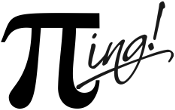 |
PING
0.9
Statistical data handling and processing in production environment
|
 |
PING
0.9
Statistical data handling and processing in production environment
|
Zip items from a start and end item list following inclusion/exclusion rules so as to correspond to the formatted categories of a single label.
start : (list of) starting item(s), i.e. the lower bound of values to consider in the categories of a label;end : (list of) ending item(s), i.e. the upper bound of category; must be the same length as start above; the items in end are possibly equals to those in start when a single value is to be considered;sexcl : (option) list of boolean flag(s) (Y/N) set to exclude items from the starting list; when the item in i-th position in sexcl is set to Y, then the item in the same position in start will be excluded from the label (i.e. regarded as lower bound); when set, must be the same length as start above; default: not set, as if it was set to N for all items in start;eexcl : (option) ibid for excluding items of the ending list from the categories associated to the label; default: not set, as if it was set to N for all items in end;type : (option) flag set to the type of the considered lists, i.e. either numeric (N) or char (C); default: 'N', i.e. the lists are processed as if they were of NUMERIC type;sep : (option) character/string separator in input list; default: %str( ).cat : concatenated list (i.e., comma-separated whenever the length of input start and end lists is >1) of items zipped from start and end; when considering lists of length 1, say it otherwise: start=s and end=e, then the zipping rule writes:
s if s=e, ors-e if s<>e and sexcl=N, eexcl=N, ors<-e if s<>e and sexcl=Y, eexcl=N, ors-<e if s<>e and sexcl=N, eexcl=Y, ors<-<e if s<>e and sexcl=Y, eexcl=Y,if the label if of type 'N'. This can be easily extended for labels of type 'C', and extrapolated for lists of length >1 so as to be read like a category label.
Given two NUMERIC start/end lists and the corresponding exclusion rules:
it is possible to retrieve the categorisation of the derived label using:
which returns cat=1, 2, 4<-HIGH, 3<-<5, 8-10. In the case of a CHAR lists, we can run:
which returns cat="000", "OTHER", "1", "A", "B".
Run macro %_example_label_zip for more examples.
myformat below, with one label A only, stored in a table TMP: PROC FORMAT library=WORK.formats cntlout=TMP;
VALUE myformat
1-3, 5, 10<-HIGH = "A";
run;
It is then possible to retrieve the categorisation of A since the following commands: %let start=; %let end=; %let sexcl=; %let eexcl; %var_to_list(TMP, START, _varlst_=start); %var_to_list(TMP, END, _varlst_=end); %var_to_list(TMP, SEXCL, _varlst_=sexcl); %var_to_list(TMP, EEXCL, _varlst_=eexcl); %let list=%label_zip(&start, &end, sexcl=&sexcl, eexcl=&eexcl);will return
list=1-3, 5, 10<-HIGH.%list_ based macros: %let labels=%list_append(
%list_append(
%list_sequence(start=1, end=36, step=5),
%list_sequence(start=5, end=40, step=5),
zip=%str(-)
),
%list_quote(
%list_append(
%list_ones(%list_length(&start), item=Y),
%list_append(&start, &end, zip=%str(_)),
zip=_EMPTY_
),
rep=_BLANK_
),
zip=%str(=)
);
which returns labels=1-5="Y1_5" 6-10="Y6_10" 11-15="Y11_15" 16-20="Y16_20" 21-25="Y21_25" 26-30="Y26_30" 31-35="Y31_35" 36-40="Y36_40".Smiley, C.A. (1999): "A fast format macro – How to quickly create a format by specifying the endpoints".